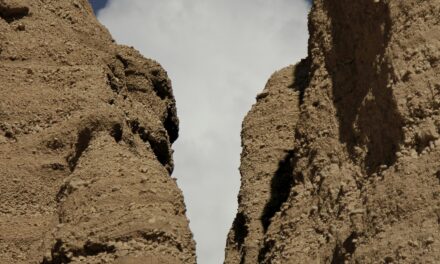For seven years I spent much of my life in silent meditation in a remote nunnery in the Himalayas. Each summer during monsoon season I would leave to go on multi-city tours, mostly in America, sharing the wisdom I’d gleaned from over nearly two decades as an “accidental” mystic. To manage the sharp transition from the peaceful solitude of my room in the mountains to the cacophonous lifestyle of western cities I had to support my meditation practice simply.
Today that simple support continues to help me maintain a remarkably quiet mind, even while living in the heart of energetic chaos: Washington, DC.
These tips can help make any meditation practice easier, more enjoyable, and more sustainable:
- Take the pressure off: think of meditation as exploring.Approaching meditation with an intention to relax and discover rather than an intention to sit quietly and conquer our thoughts helps put both body and mind at ease. There’s no right or wrong way to explore, and there’s nothing specific we have to find. Trying to force a particular outcome in meditation constricts natural energetic flow and limits what can arise on its own. But entering into internal focus with, “What’s here to discover in this moment?” makes it easy to rest in a state of allowance and simply watch what comes up.
- Help your body be an efficient vessel. Our body is an integral part of meditation, so the fewer distractions it has, the better. Everything we eat and drink becomes energy flowing through our body, as does what we think about what we eat and drink. Meditating on an empty stomach lowers the risk of energetic interference not only from digestion and changes in body chemistry, but also from emotional responses to things like guilt and shame. Meditating before eating also fosters healthier food and drink choices, since the body feels naturally calmer and sated before those states of being are sought through external sources.
- Find your happy places. Energy in our body and mind flows more openly in relaxing environments than in places associated with chaos. Even moving from one room to another in our home or office we can constrict or expand, depending on what we associate with each space. For a structured practice, sitting in spaces that feel welcoming, or better yet, joyful, is immensely helpful in fostering relaxation and focus. Being out in nature is ideal, since it’s literally the place of no resistance, but second best is anywhere that feels comfortably inviting.
- Say thank you often. Gratitude opens constricted energy pathways within the body and mind by bringing our attention joyfully into the present moment. When we focus on something we’re not grateful for, our energy constricts with physical and mental rejection of the present moment. But when we focus on something we’re grateful for, our energy opens up with physical and mental invitation to the present moment.The more we practice gratitude, the more easily our body and mind naturally invite awareness of the present moment into our meditation.
- Embrace thoughts without indulging them.Meditation can help us discover not only the magic that lies beyond our thoughts but the magic that lies in the thoughts we can’t seem to go beyond. In the spirit of exploration, whatever we discover is simply something to marvel at. And being aware of what’s within us can be deeply healing when we do so with compassion. Using the gentle practice of “I see you, thank you, goodbye” with thoughts as they arise allows us to bypass denial or judgment of what we’re aware of, and lets everything come and go in a space of loving acceptance.
- Make mundane moments count.Even longtime meditators can have difficulty quieting thoughts for a few minutes after said thoughts have had free reign over the mind all the other minutes of the day. Rather than trying to relax the mind only during a structured meditation, we can help condition the mind to relax in small increments throughout the day. A moment of intentionally dropping awareness down into the breath or the heart or even the toes to sense what we can feel there tells the mind it’s okay to take a break from thinking. This also helps us practice being present. We can do this while brushing our teeth, getting up from a chair, riding in a car, walking down a hallway, eating, and so on. Incremental meditation trains the mind to remember relaxing as a natural way of being.
- Show both ends of the day some love. Meditating for 20-30 minutes (average) only once a day can add pressure to perform well in that one sitting, and can also lead to feeling unnourished at one end of the day or the other. If one longer sitting is a struggle or doesn’t support us for the long haul, then we can split it up and sit for shorter periods twice a day. As with incremental meditation moments, the repetition of twice daily sittings helps train the mind to relate to relaxing as a way of being. As this becomes habit, we naturally seek longer and more frequent sessions.
- Play the field with techniques. Do you enjoy meditating alone or in groups? Do you work best with formal structure or flexibility? Does chanting or repeating a mantra help or distract you? We can sample the wonderful range of methods and teachers and see what feels best for our particular way of being. We can switch things up, mix and match, and develop our own flow. Keeping things fresh helps keep us engaged.








Grateful for these kind and inspired words
So happy to have learned about this site and to have read this article! Thank you, thank you, thank you.
I love your divine wisdom and gentle guidance. Thank you.
During this period, under the leadership of David,
the neoclassical movement even spread towards the French ways of
life, even hair style and coat were Greece and
Rome style. The bigger the sticker and more the graphics, the larger may be the price
along with the smaller the sticker the lesser may
be the price. Many people associated the famous phrase “Renaissance man” primarily using the name of Leonardo.